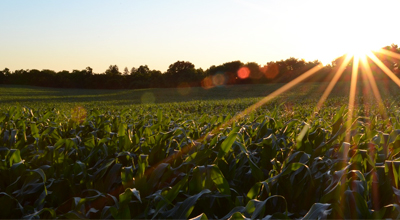
Image: Pixabay
The Brazilian corn market now presents two clear situations. The first, at this time of soybean pre-harvest, is that there is some pressure from regional corn sales by producers, helping to adjust prices in isolation. The second is some acceleration in prices for the second harvest of 2021 due to the exchange rate and external prices, with greater competition between the domestic market and exporters in some regions. Without a doubt, the supply situation in the first half of the year seems quite clear, with no slack in prices due to the harvest or slowdown in demand. Now, the second half of the year is more subject to seasonal weather stresses for the second 2021 harvest and the 2021 US harvest. If both harvests are normal, without problems,
Corn prices in the Brazilian domestic market are, without a doubt, high. R $ 75/85 for the start of the summer harvest is very significant and does not show the traditional seasonality of prices at this period of the year. This is the most evident movement that indicates that Brazilian domestic supply will not be calm until the beginning of the second harvest of 2021. The domestic market will try to push this condition of adjusted supply in the first half of the year, seeking to impose regional price control, presenting news of cutting demand and/or acting aggressively to contain rising BM&F futures prices. Every week brokers try to generate information about Brazil's imports, although import costs are still far from domestic prices. These are devices that will continue to be used for producers to sell at critical supply times, which is part of the market's daily routine.
However, despite the difficult situation especially in poultry farming, there are no symptoms of cuts in domestic demand for corn. The drop in wholesale prices for chicken meat or live chicken did not impact corn consumption. It will only be visible when the housing presents a cut below the estimate for this first semester. Furthermore, there is no movement by the ethanol or milling industry to cut demand. There is a potential negative impact on domestic food demand with the end of social assistance granted by the federal government. However, it has not yet reached corn consumption.
{module Form RD}
Therefore, the price drop recorded last week in some states seems natural and has nothing to do with demand or supply slack. We are just in pre-harvest for soybeans, and some producers are liquidating old crop positions with corn to make money. In places where the harvest has already started, prices are very good and producers with little supply are selling. Just it.
On the other hand, the soybean harvest will reach its peak in February and March, with severe delays and concentrated logistics. Producers or traders who need to get rid of corn before this strong arrival of soybeans have already done so or will do so in the coming days. But once soybeans have a stronger crop advance, it will be more difficult to see the interest in selling corn or taking it away. Therefore, we cannot trust traditional information that, as the price of chicken is low, corn will fall. There is no such direct relationship. The direct relationship is that the cut in housing will cause a future drop in demand, which does not yet exist. On the other hand, regardless of the size of this demand, February and March will be difficult months in terms of internal supply and logistics. Is corn may have new sharp highs.
The second 2021 harvest begins to be planted in February in a more concentrated manner and observing the progress of the soybean harvest. We do not see serious problems for planting the second crop in February until the beginning of March. Of course, this is a later harvest and will be more clearly subject to the weather conditions of our autumn/winter. However, we cannot say that productivity will be bad just because of this planting in February, especially because it is not the first and will not be the last to be planted in this cycle.
The second harvest will be large even with some weather problems that may arise until July. So, in addition to the tension with the climate, we have the movement of export purchases. Today, a good part of the second harvest is destined, as always, for exports, but we noticed a good aggressiveness from domestic buyers in the dispute for corn in July/August. This could even avoid greater pressure on prices at the beginning of the harvest, but from then on, prices would actually depend on the pace of exports and the producers' attitudes towards selling or not their production. Considering CBOT prices and the dollar curve, the levels indicated for the second 2021 harvest seem satisfactory for the advancement of sales by producers. For higher prices, we would need problems in the 2021 US harvest and/or a further rise in the currency.
Per Arno BaascH | SAFRAS Latam Agency












